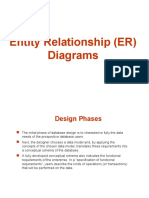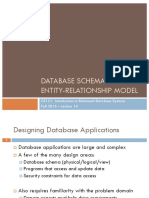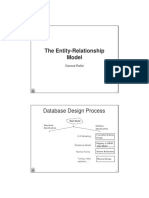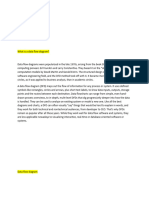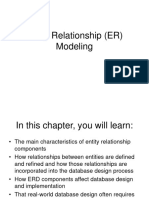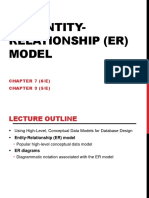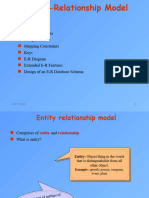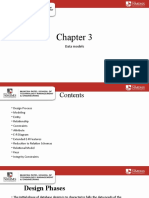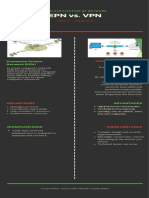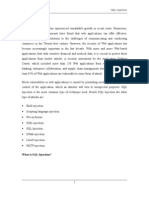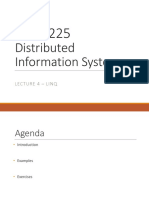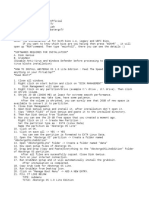0% found this document useful (0 votes)
52 views71 pagesLecture 2 - Database Design
This document discusses database design principles and the entity-relationship (ER) model. It covers topics such as the goals of database design, normalization, conceptual database design using ER diagrams, and mapping ER diagrams to relational schemas. The document provides examples to illustrate key ER modeling concepts like entity sets, attributes, relationship sets, cardinalities, participation constraints, weak entities, specialization, and aggregation.
Uploaded by
aadarsh gaikwadCopyright
© © All Rights Reserved
We take content rights seriously. If you suspect this is your content, claim it here.
Available Formats
Download as PDF, TXT or read online on Scribd
0% found this document useful (0 votes)
52 views71 pagesLecture 2 - Database Design
This document discusses database design principles and the entity-relationship (ER) model. It covers topics such as the goals of database design, normalization, conceptual database design using ER diagrams, and mapping ER diagrams to relational schemas. The document provides examples to illustrate key ER modeling concepts like entity sets, attributes, relationship sets, cardinalities, participation constraints, weak entities, specialization, and aggregation.
Uploaded by
aadarsh gaikwadCopyright
© © All Rights Reserved
We take content rights seriously. If you suspect this is your content, claim it here.
Available Formats
Download as PDF, TXT or read online on Scribd
/ 71











